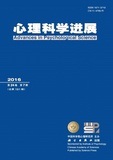|
|
The attentional bias for food cues and its neural mechanism
LI Ling, HOU Xiaoxu, ZHANG Ya, SUI Xue
2020, 28 (12):
2040-2051.
doi: 10.3724/SP.J.1042.2020.02040
Compared with other types of stimuli, individuals preferentially pay attention to food-related stimuli, that is, the attentional bias towards food stimuli. Analysis of the individual factors that influence this attentional bias for food cues showed the following results: First, among the state factors, hunger and negative emotions related to self-threat with high intensity of arousal had an enhanced effect on attentional bias for food cues, which was reflected in early and late attention processing. Second, among the trait factors, the behavior study found that, compared with normal weight individuals and non-restriction dieters, overweight/obese individuals and successful restricted dieters who evoke dieting goals did not have a stronger attentional bias for food cues. However, the event-related potential study found that at the early stage of attention processing, the influence of trait factors on attentional bias for food cues appeared. Lastly, fMRI studies have found that attentional bias for food cues is accompanied by activation of reward-related brain regions such as the insula, orbitofrontal cortex, and visual attention networks. It is suggested that future research should be devoted to the following four aspects: (1) studying attentional bias from a dynamic perspective to further improve the reliability of measurement, (2) using specialized paradigms to explore the neural mechanism of individual factors affecting attentional bias, (3) distinguishing the different state factors to explore the attentional bias for food cues, and (4) the conducting of rigorous screening and classification of subjects to conduct comparative studies among them.
Related Articles |
Metrics
|




